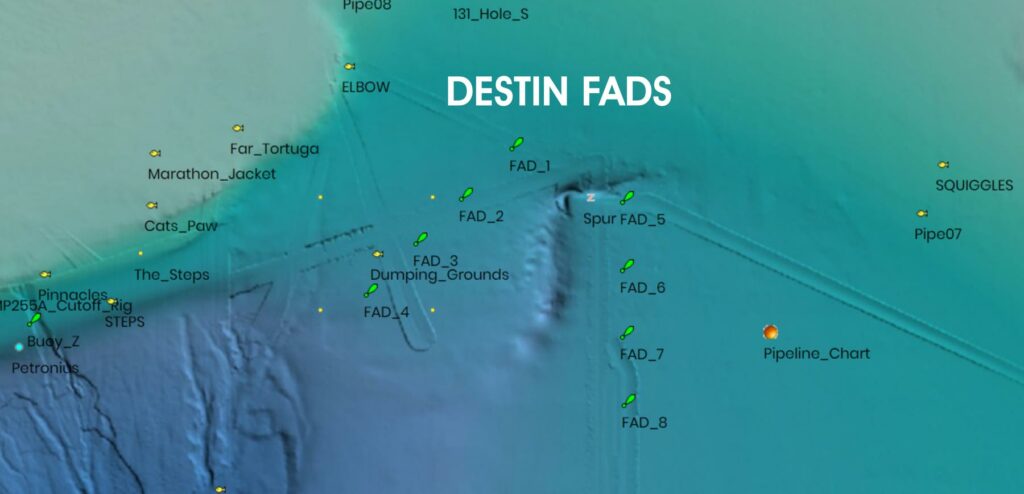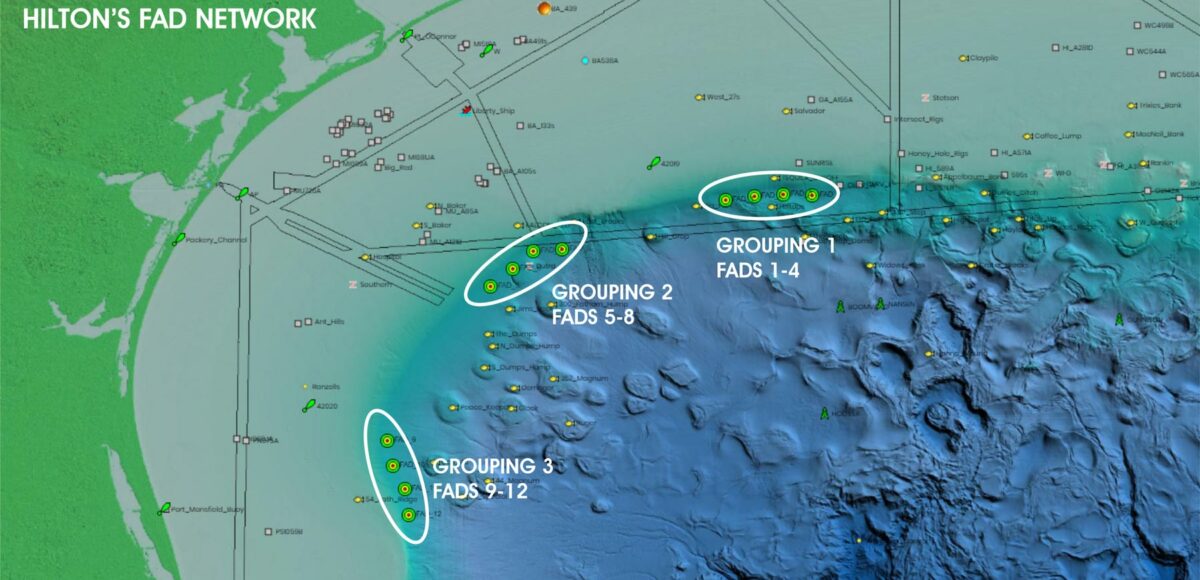It looks like we are getting closer to the final approval of a legal FAD (Fish Aggregating Device) project off the Texas coast. Tom Hilton, owner of Hilton’s Realtime- Navigator in Arcola, Texas, has been responsible for pushing this venture forward after recognizing the huge success of FADs deployed around 60 miles off Destin, Florida, a couple of years ago. The purpose of the Destin FADs was to provide deep water structures to fish that were much closer as an alternative to making the 200-plus mile journey westward to reach the rigs and drill ships off the Mississippi Delta.
“The Destin FADs were the first ‘legal’ FADs deployed in U.S. Continental waters and have proven to be a great source of fun and enjoyment for those anglers fishing over there,” says Hilton.
The Destin FADs have already been responsible for numerous tournament wins and contributed to the success of many in the local charter fleet. Plus, they’ve boosted the economy in the coastal region through increased revenues from the anglers who come to fish them. Thanks to these factors, there has now been a precedent set to help with the continued approval for the FADs off the Texas coast.
There is a bit of a misconception about how many rigs we actually have to fish off the Texas coast. These are fewer than many realize and remarkably less than those accessible in the eastern Gulf. Over the past decade, there’s been a big push to remove many of the inshore rigs. Out of the seven deep water spars (Diana, Perdido, Gunnison, Auger, Magnolia, Boomvang and Nansen) that we have access to, some of these are scheduled for removal over the next few years. The goal is to get ahead of this before they are all gone through the development of our own FAD groups placed off the coast between Galveston and South Padre Island, Texas.

Tom plans to produce (he’s already researched the buoys, ground tackle and electronics) and deploy 12 FADs in three groups of four, individually spaced six miles apart. All three groups will be positioned just off the shelf in 1000’ to 1500’ of water, conveniently near other existing structures up and down the coast. The northern group of FADs will be located between the Tequila cutoff rig and the Hilltops. The central group will be set near Falcon Cutoff, East Breaks, Dutra and Jim’s Peak. The southern grouping will be just off the edge, inshore of Colt 45. Placing these groups near existing reefs and bottom structures increases fishing productivity in those areas as well and allows anglers to maximize their opportunities between the FADs and these structures. Placement of these groups closer to shore will save travel time and fuel for everyone from the large sportfishing fleet to the center console boats and allow many more anglers a favorable chance at billfish and other pelagic species.
Tom’s intentions are also to sell the naming rights to each FAD to help with the funds needed to produce, deploy, maintain and eventually remove the FADs over their seven-to-10-year lifespan.
“The FAD names will be prominently positioned on Hilton’s Realtime- Navigator charts as well as Atlantis Marine Habitat charts on the web and RT-NAV app. Click on the FAD icon and it hyperlinks to that company’s website to drive customers (and goodwill) to that company,” says Hilton.
“When the regulatory process is successful, we can get started on the funding, and all contributions will be tax-deductible through organizations such as the Houston Big Game Fishing Club (HBGFC). The board of HBGFC has agreed that we need to make this project a priority and help the process move forward for the future of all Texas anglers.”









